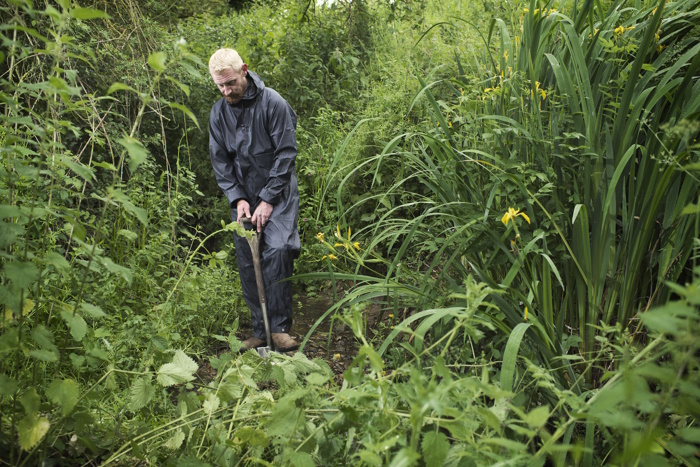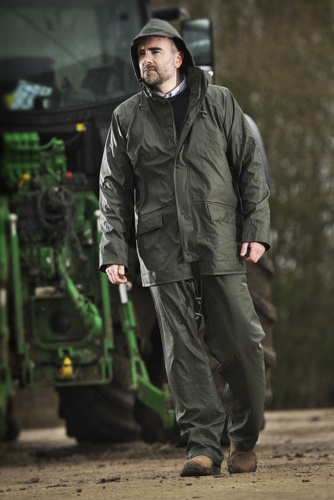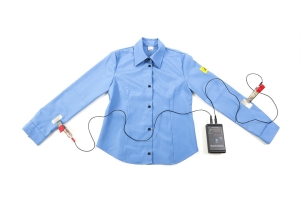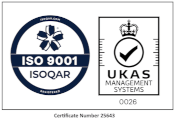
Buyer’s Guide to Waterproof Clothing
In this guide, we will look at how waterproof clothing is rated, the different ratings of waterproofness and the types of fabric used to make these garments. Waterproof describes material resistant to moisture and water getting through. Materials either have a membrane or coating on the surface that acts as a barrier keeping you comfortable and dry.
Choosing the right garment for the type of use is very important, to ensure that whatever the weather conditions may throw at you, you know you've chosen the right garment at the right time.
Waterproof Ratings Explained
2,000mm: This is the lowest rating for clothing to be called rainproof - resistant to light showers – for casual use.
3000mm to 5000mm: Typically, lightweight garments falling between this rating range are suitable for wearing in the rain for a short amount of time.
5000mm to 10,000mm: Ideal for work, garments that sit within this rating can be worn in moderate rain conditions and are usually made from heavier materials.
10,000mm to 15,000mm: Most waterproof jackets and trousers will be rated waterproof to 10,000mm, withstanding heavy downpours.
20,000mm and higher: This is the highest waterproof rating for going out in all conditions in heavy, prolonged rain.
Hydrostatic Head Test – How is Waterproofness Tested?
A hydrostatic head test is used to determine the waterproof rating of clothing. A minimum rating of 1,500mm is enough to be rated waterproof. To begin, a section of fabric is pulled tight under a tube and sealed. The tube is then slowly filled with water (in mm) and the fabric is monitored for 24 hours to see how much water the fabric can resist before penetrating through. An item of clothing with a waterproof (hydrostatic head) rating of 2,000mm can resist 2,000mm of rainfall in a day before water starts seeping in. The higher the rating, the more waterproof the garment.
Waterproof Fabrics
There are a few fabrics that make great waterproof options for clothing:
- Polyester and Nylon – these synthetic fabrics are water-resistant due to having a tight weave.
- Polyurethane – the best waterproof material as it is breathable, and oil and crease-resistant. It is also a soft flexible fabric that gives room for movement.
- Rip Stop – this is a tear-resistant fabric that is nylon threaded but not completely waterproof as prolonged exposure to water means it will eventually penetrate through. It is also not breathable or stretchy.
What is the Difference Between Taped and Welded Seams?
Taped seams increase protection from the rain on waterproof clothing. When a garment is sewn, stitching needles leave tiny holes allowing water to seep through. To prevent this, a machine melts thermoplastic tape over the seams to seal them. Fully taped seams mean every seam on the fabric has been sealed making it extremely weatherproof, whereas critically taped seams only have the exposed areas sealed such as the neck, shoulder, and chest.
Welded seams offer maximum waterproofness as there are no needle holes due to the two pieces of fabric being fused together using heat and pressure. This creates one seamless surface stopping water and chemicals from penetrating the garment. The problem with welded seams is that it prevents air flow, so the fabric needs to be breathable to avoid the wearer excessively sweating.
Fabric Breathability
Breathable fabrics allow heat and sweat (in the form of water vapour) to escape through the material quickly, preventing condensation build-up inside the garment. Breathable clothing keeps you dry while working and being physically active. The Moisture Vapour Permeability (MVP) rating measures the speed at which water vapour can escape per square metre (m2) of fabric in 24 hours. The higher the MVP rating, the better the fabric is for breathability. Frequently, you will see a waterproof rating alongside a breathability rating on clothing.
Currently, there are three different tests for measuring the breathability of the fabric. These are the Upright Cup test, the Inverted Cup test, and the Sweating Hot Plate test. An MVP rating of more than 8,000gm2 is considered good for general outdoor use, and an MVP rating of 20,000gm2 is best for more physical activity or work. An MVP rating of 30,000gm2 or more is great for prolonged activities like sports such as skiing.
The Upright Cup test – a piece of fabric is attached over the top of an upright cup to fully cover and seal it. It is then monitored for 24 hours to see how much water vapour passes through the fabric into the cup. The weight of the cup is then checked to see the amount of moisture released by the fabric, giving the breathability rating.
The Inverted Cup test – fabric is put on top of a waterproof membrane and used to cover a cup which is then inverted and placed into a pan of water. After 24 hours, the weight of the cup is measured to see how much moisture has been collected in it.
The Sweating Hot Plate test – this test differs from the upright and inverted cup tests where evaporative resistance of fabrics and moisture loss is measured when heat is applied. This creates controlled conditions like someone producing heat during strenuous physical activity. A heated metal laboratory plate produces temperatures to cause sweating. The clothing being tested is then added to the plate with water to replicate moisture. The plate is kept at a constant temperature and measured to find out how much energy is used to keep it cool. Normally in real life, this would happen when the vapour is released to the outer layers of the garment keeping the body cool. The amount of energy used to do this is shown as the resistance of evaporation of a textile (RET).
Construction of Waterproof Garments
Waterproof garments are made up of two or three layers: an outer layer (‘face fabric’), a membrane layer, and a tri-coat mesh (inner) layer.
- The outer layer – the first layer for water resistance is treated with a DWR (durable water repellency) coating and made from either polyester or nylon fabric. DWR causes water to bead up and roll off the surface instead of being absorbed. This layer and the membrane make up the 2-layer fabric construction and will have a loose liner to protect the membrane. It also dries quicker.
- The membrane – the membrane layer is made from Teflon also known as ePTFE (expanded Polytetrafluoroethylene) and thinly coated with PU (Polyurethane) on the inside of the outer layer. This makes the membrane oil-resistant, but breathable as tiny holes allow water vapour out whilst preventing water from getting in.
- The inner layer – this is made up of a 2-layer construction (outer layer and membrane) and is attached to a lightweight mesh layer.
These layers make up a 3-layer waterproof garment – the most advanced construction offering maximum protection whilst remaining durable, flexible, and breathable. Over time, oil, dirt, and abrasion can break down the DWR treatment, which is why it is important to either replace your waterproof clothing or reapply the coating.
Waterproof coats and trousers are essential pieces of workwear or outdoor pursuits to provide protection from the wettest conditions. Shop our collection of Waterproof Coats and Jackets and matching Waterproof Trousers.







